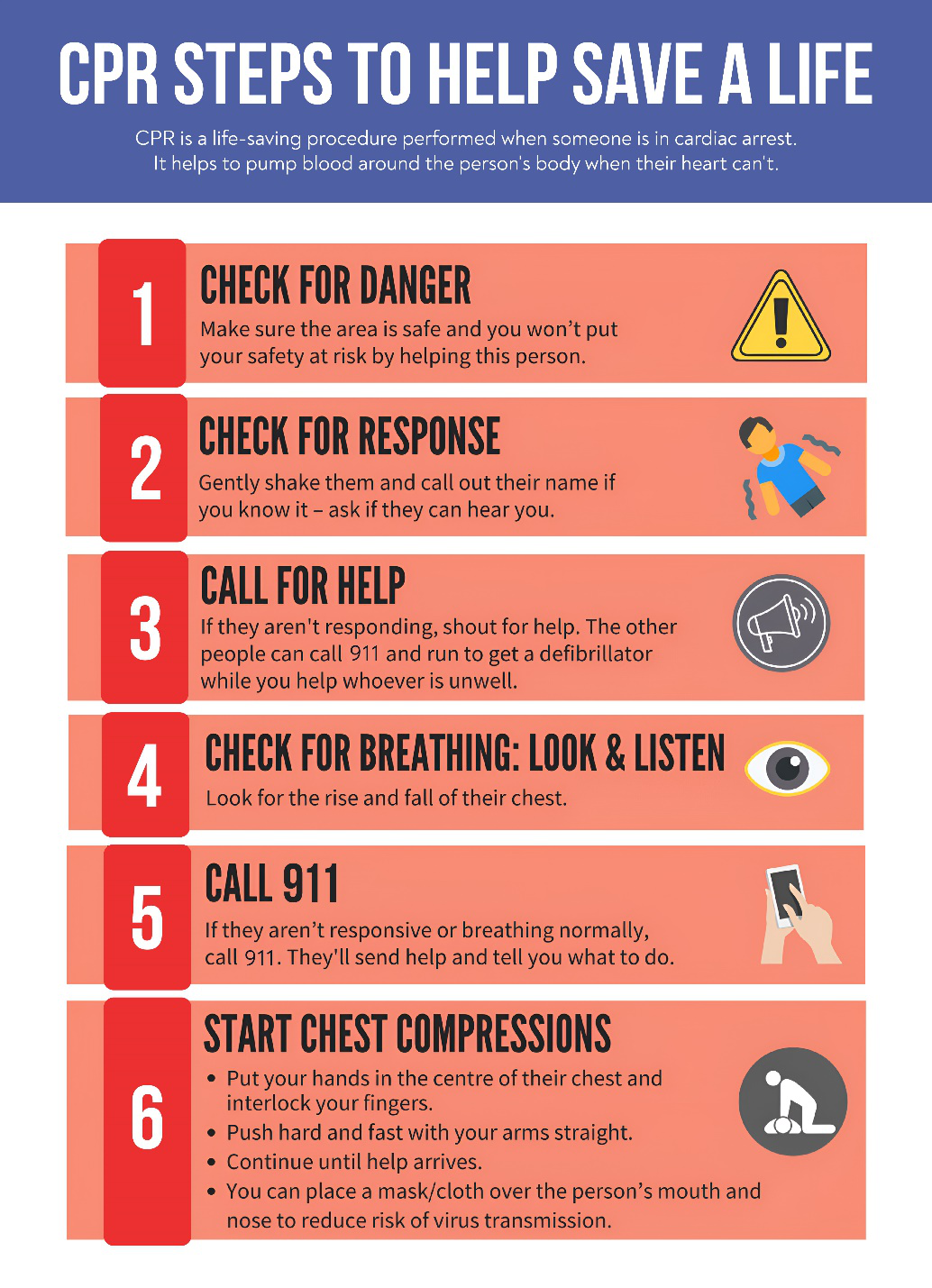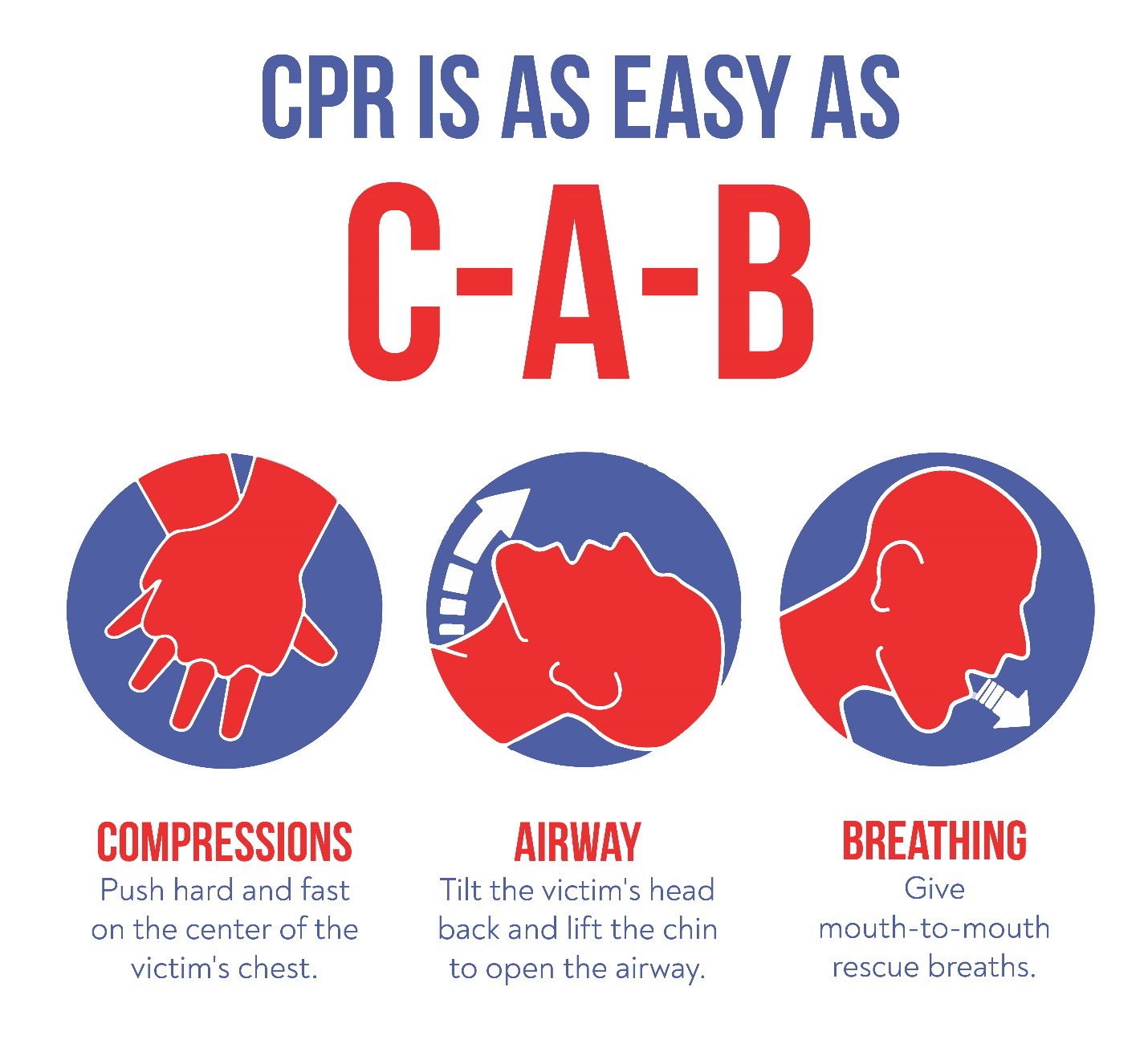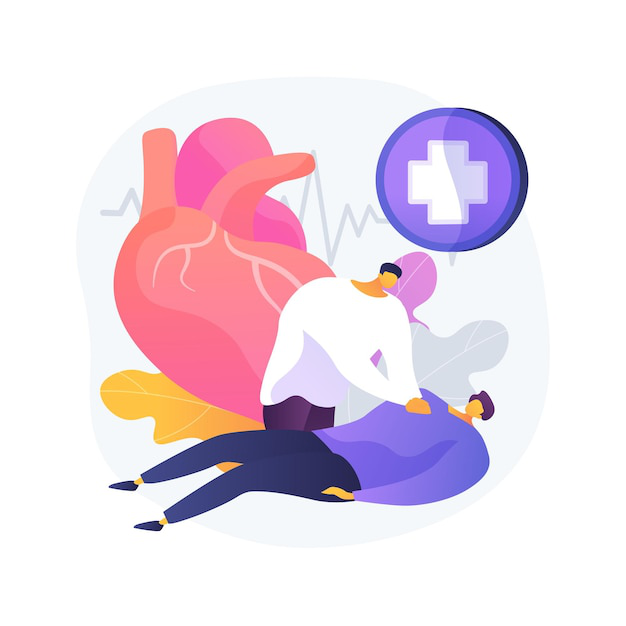Cardiopulmonary resuscitation (CPR) and Automated External Defibrillator (AED) techniques are fundamental skills that can make the difference between life and death in emergencies. However, as critical as CPR/AED Level C training is, it represents just the starting point.
This blog discusses various Advanced CPR/AED techniques, exploring how these advanced skills can be applied in complex emergency scenarios to enhance outcomes and save lives.
The Importance of Advanced CPR/AED Training
Basic CPR/AED training provides foundational skills essential for responding to cardiac emergencies. These skills are critical for laypersons and professionals alike. However, in certain high-risk environments or professions, basic training may not be enough.
Advanced CPR/AED techniques are designed to equip responders with a more comprehensive skill set, allowing them to handle more complex and varied emergencies.
For example, advanced training may include managing multi-victim scenarios, understanding advanced airway management, or using specialized equipment such as bag-valve masks. This level of training is particularly important in environments where the risks of severe medical emergencies are higher, such as in industries that also require fall protection training in BC.
The Scope of Advanced CPR/AED Training
Advanced CPR/AED training typically covers:
- High-Performance CPR:Techniques that optimize the effectiveness of chest compressions, often involving team-based approaches.
- Airway Management:Use of tools such as oropharyngeal airways, nasopharyngeal airways, and advanced airway devices like laryngeal mask airways (LMAs).
- Pharmacology:Understanding the role of medications during cardiac arrest, including the administration of drugs such as epinephrine or amiodarone.
- Complex Arrhythmias:Identifying and responding to a broader range of arrhythmias, including those requiring synchronized cardioversion.
- Post-Resuscitation Care:Managing the patient after return of spontaneous circulation (ROSC), including therapeutic hypothermia and advanced hemodynamic support.

High-Performance CPR: A Key Component of Advanced Training
High-performance CPR (HP-CPR) is an optimized approach to chest compressions, focusing on minimizing interruptions and maximizing the quality of compressions.
HP-CPR is a critical component of advanced CPR/AED training because it significantly increases the likelihood of successful resuscitation, especially in professional settings where responders work in teams.
Techniques and Best Practices
HP-CPR emphasizes several key practices:
- Team Coordination:HP-CPR often involves multiple rescuers, each with a specific role, such as performing compressions, managing the airway, or preparing the AED. Effective communication and role clarity are essential.
- Compression Depth and Rate:Maintaining the recommended compression depth (at least 2 inches in adults) and rate (100-120 compressions per minute) is crucial.
- Minimizing Interruptions:Chest compressions should be paused only when necessary, such as when delivering shocks with an AED or during advanced airway placement.
- Chest Recoil:Full chest recoil between compressions is important to allow the heart to refill with blood, which improves circulation during CPR.
3. Advanced Airway Management: A Critical Skill
Airway management is one of the most critical aspects of advanced life support. Proper airway management ensures that oxygen can be delivered to the lungs, which is vital for maintaining brain function and overall survival. Advanced CPR/AED training includes techniques for securing the airway and ventilating the patient effectively.
Techniques and Tools
Advanced airway management may involve:
- Bag-Valve Mask Ventilation:A skill that requires practice to perform effectively, especially in maintaining a good seal and providing adequate ventilation without causing gastric inflation.
- Use of Airway Adjuncts:Devices such as oropharyngeal and nasopharyngeal airways help keep the airway open in unconscious patients.
- Advanced Airway Devices:These include endotracheal tubes, laryngeal mask airways (LMAs), and supraglottic airway devices, which require specific training to use correctly.
Integration with Other Safety Protocols
In work environments where employees might also need confined space training in Vancouver or fall protection training, advanced airway management becomes even more critical.
For example, confined spaces can present unique challenges for airway management due to limited access and the potential for exposure to hazardous atmospheres.

Pharmacology in Advanced CPR/AED: Medications That Save Lives
The Role of Medications in Cardiac Arrest
In advanced CPR/AED scenarios, the administration of specific medications can be life-saving. Understanding when and how to administer these drugs is a key component of advanced training.
Common Medications Used
- Epinephrine:Often administered to increase the likelihood of ROSC during CPR. It works by increasing blood flow to the heart and brain.
- Amiodarone and Lidocaine:These antiarrhythmic drugs are used to treat certain types of arrhythmias that are resistant to defibrillation.
- Atropine:Used in cases of severe bradycardia (slow heart rate) that do not respond to other interventions.

Practical Applications
Training in the use of these medications is usually integrated with scenarios that mimic real-life situations, allowing responders to practice under conditions that closely resemble the challenges they might face in the field.
Complex Arrhythmias: Identification and Management
Basic CPR/AED training covers the identification and treatment of ventricular fibrillation (VF) and pulseless ventricular tachycardia (VT). However, advanced CPR/AED Level C training expands on this by covering a wider range of arrhythmias, including:
- Atrial Fibrillation:While not immediately life-threatening, it can lead to stroke if not managed properly.
- Bradyarrhythmias:Slow heart rhythms that may require pacing or atropine.
- Tachyarrhythmias:Fast heart rhythms that may require synchronized cardioversion.
Treatment Protocols
Advanced training provides responders with the skills needed to identify these rhythms quickly and take appropriate action, whether that involves the use of an AED, medication, or advanced airway management.
Post-Resuscitation Care: What Happens After ROSC
Achieving ROSC is a significant milestone, but the care provided after resuscitation is critical to the patient’s long-term outcome. Advanced CPR/AED training includes post-resuscitation protocols, which are designed to stabilize the patient, prevent further complications, and support recovery.
Key Components
Post-resuscitation care may involve:
- Therapeutic Hypothermia:Cooling the body to reduce the risk of brain damage following cardiac arrest.
- Hemodynamic Support:Using medications and fluids to maintain blood pressure and organ perfusion.
- Monitoring and Continued Care:Continuous monitoring of the patient’s heart rhythm, oxygen levels, and other vital signs is essential to detect any deterioration early.

Advanced CPR/AED in Specialized Work Environments: Application in High-Risk Industries
Advanced CPR/AED techniques are particularly important in industries where workers face higher risks of injury or exposure to hazardous conditions. For example:
that are essential for anyone who might encounter a cardiac emergency. However, emergencies can vary significantly in complexity, and sometimes, basic training may not be enough to ensure the best possible outcome.
This is where Advanced CPR/AED training comes into play. It equips individuals with more sophisticated techniques, a deeper understanding of physiology, and the ability to handle challenging scenarios that go beyond the scope of basic certification.

When Advanced CPR/AED is Essential
CPR/AED Level C Training covers the fundamental steps for resuscitation and defibrillation and is crucial in situations such as:
- Prolonged resuscitation efforts:In some cases, emergency medical services (EMS) may be delayed, requiring an extended period of resuscitation efforts. Advanced training provides the skills needed to manage prolonged CPR.
- Complex medical histories:Individuals with certain medical conditions may require modifications to standard CPR protocols. Advanced training helps in understanding these complexities.
- Multiple casualty incidents:In events involving multiple victims, such as mass casualty incidents, advanced training enables more effective triage and management of resources.
By mastering advanced techniques, rescuers can significantly increase the chances of survival and improve overall outcomes.
Advanced Circulatory Support Techniques

Improving Blood Flow During CPR
The primary goal of CPR is to maintain the circulation and oxygenation of vital organs, particularly the brain and heart. Advanced circulatory support techniques focus on optimizing blood flow during resuscitation, going beyond the basic chest compressions taught in Basic First Aid training in Surrey.
Use of Mechanical CPR Devices
In certain situations, mechanical CPR devices such as the LUCAS device or AutoPulse can be used to deliver consistent and effective chest compressions.
These devices are particularly useful in settings where prolonged CPR is required or in transport situations where manual compressions may be challenging to maintain.
Use of Intravenous (IV) Drugs
Advanced CPR includes the administration of specific drugs that can aid in the resuscitation process. Medications such as epinephrine, amiodarone, and vasopressin are used to manage cardiac arrhythmias and improve the effectiveness of CPR. Understanding when and how to use these drugs is a key component of advanced training.
Advanced CPR/AED techniques are essential for anyone serious about being prepared to handle complex emergencies. By going beyond basic certification and mastering advanced skills, you can significantly enhance your ability to save lives and improve outcomes in critical situations.
At Metro Safety Training, we offer comprehensive Advanced CPR/AED courses that equip you with the knowledge and skills needed to perform effectively in the most challenging scenarios. Whether you need basic first aid training in Burnaby, intermediate first aid training in Vancouver, or confined space training in Richmond, we have the programs you need to stay prepared and compliant.
Take the next step in your safety training journey. Contact Metro Safety Training today.







